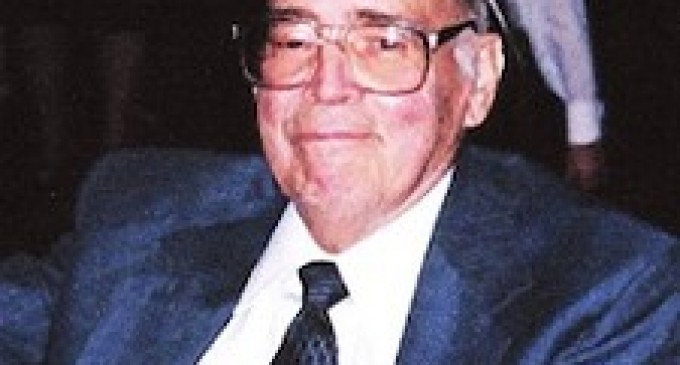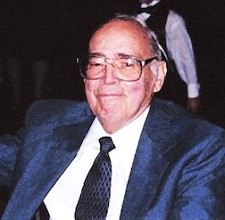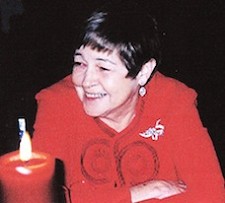1999 FIN – Callahan’s Observations on the Changing Industry at the 20th Anniversary of Fastener Industry News

FASTENER HISTORY
1999 FIN – Callahan’s Observations on the Changing Industry at the 20th Anniversary of Fastener Industry News
Editor’s Note: To Mark the 20th anniversary of Fastener Industry News, the founder, first editor and first publisher, Dick Callahan, recalled his years from 1979 to 1994.
By Dick Callahan
July 9, 1999 FIN – Twenty years ago, July 10, 1979, to be exact, my boss (and wife) Harriet and I started this biweekly newsletter, adding it to our other publications, including Wire Industry News (WIN) and Supplier Industry News (SIN).
Starting FIN in 1979 was not a great piece of timing on our part. Jimmy Carter was in his third year as the 39th president, there were distractions, such as the hostage situation in Iran, an energy crisis, record federal expenditures, an unsuccessful attempt to cut taxes and wrangling over the proposed return of the Panama Canal to Panama. Double-digit inflation and rising unemployment (reaching 7.8 million) resulted in a recession – the seventh since World War II – and the election of Ronald Reagan as president in 1980.
The early days of the Reagan years didn’t immediately alleviate the national “malaise” (Carter’s word). In late 1981 recession number eight came, with unemployment rising to 10 million.
The fastener industry’s business outlook, which generally walks lockstep with the general economy, was none too optimistic.
Despite the unpropitious economic climate in 1981, Mike McGuire decided to start the National Industrial Fastener Show & Conference in his hometown of Columbus, OH. Industry consensus was hardly sanguine. However, over the years the show grew, and the NIFS Hall of Fame and a western version were added.
The Chicago Bolt, But & Screw Association, unveiled its first tabletop show in 1982. The shows helped provide a salutary note of heightened expectation for the future; a hope realized when the economy began to expand in late 1982.
Though the latter years of the Reagan administration saw the stock market crash of October 19, 1987, when Dow Jones Industrial Average plummeted 508 points, the economy survived and unemployment dropped to 5.2% in 1988. Again fastener fortunes shadowed the general economy.
George H.W. Bush’s one-term tenure from 1989 to 1993 featured the war in the Persian Gulf, the Berlin Wall falling, the $200 billion savings & loan bailout, a shallow and short recession in 1990 and an ill-advised flip-flop on his “Read my lips, no new taxes” campaign vow.
For the fastener industry the Bush years brought the Fastener Quality Act and North American agreements eliminating trade barriers between Canada, Mexico and the U.S.
The 1990’s also saw consolidations – but bigger, as Goliath found out, is not necessarily better. While some families (let’s call them dynasties) have faded from the U.S. fastener business, there are a refreshing number still in play. A not-all-inclusive list is: the clans Branson, Broehm, Cohn, Cordova, Dorflinger, Endries, McIlhon, O’Donahue, Payne, Porteous, Revercomb, Sackheim, Stanley, Sullivan and Zehnder.
Just before FIN turned 15 and its original editor hit 65, we began receiving inquiries from a West Coast group about acquiring the newsletter. These messages, along with others from publications brokers, quickly hit the round file. We weren’t adverse to selling FIN but we wanted qualified people to take over. When we eventually learned that the West Coast bidders were retired fastener importer Eric Cohn’s stepdaughter and son-in-law, it got our attention and we knew that our newsletter would be in good hands. John and Ann proved us right.
Looking ahead, FIN will be covering Y2K (how will computers cope with inventories and just-in-time scheduling); ramifications to world trade of the newly consolidated Europe (poised, we believe, to challenge the U.S. dollar with its “Euro” common currency as the world’s favorite reserve currency); an aggressive China determined to assert its primacy in the Pacific area; a new White House administration in 2001 and its business policies; the economy and stock market; and an industry becoming part of what McLuhan called a “global village.” International trade is an impending issue in another way with the 147 World Trade Organization countries currently looking for new leadership and direction. ©1999/2010 Fastener Industry News
On Our Watch 1979 – 1994
• Regional fastener associations increased in number from seven in 1979 to 15 in 1994, with distributors providing most of the impetus for this twofold growth.
The Industrial Fasteners Institute had been established in 1931 and the Chicago Bolt, Nut & Screw Association in 1946 and five more in the 10 years immediately prior to the first FIN. There also are nine active in Europe and the Pacific area.
• The once-intense name-calling rivalry between importers and domestic fastener suppliers evolved into a more harmonious, if not quite buddy-buddy, relationship.
• Japan lost its spot as number-one fastener exporter to the U.S. “The fastener kingdom” of Taiwan first supplanted Japan, followed by other Asian countries.
• Japan began assembling automobiles in the U.S., but initially did not use U.S.-made fasteners. They imported fasteners from Japanese-owned or partially owned companies in Japan or Japanese-owned plants in the U.S. Eventually the situation improved somewhat, giving U.S. fastener companies limited access to Japanese auto plants here.
• Domestic production of fasteners, which had been steadily declining, got a major needed boost in 1986 when Nucor opened its first bolt-making plant in St. Joe, IN.
• LIFO/FIFO inventory control practices underwent major changes, resulting insubstantial savings for distributors and others.
• ISO-9000 and QS 9000 certified manufacturing facilities grew in number as more end-users, especially in Europe, required such quality assurance systems.
• Metric fasteners, despite prognostications of imminent market dominance, did not supplant long-established inch-based fasteners. However, metric fasteners did become more available as Henry Bossard and others set up stateside operations.
• Mexican Maquiladora plants, feared by some, did not have the devastating impact on the U.S. fastener field that some predicted.
• After long discussions, President Bush signed the Fastener Quality Act into law on November 16, 1990. FIN then predicted “it is possible that two years or even more time may pass before suppliers of safety-critical fasteners will be subject to the FQA …”
The FQA resulted from the sale of counterfeit bolts for use in safety-critical applications when they were supplied to the military and other users. Some scumbags were dealing in sub-standard fasteners, but the whole industry was being mulcted for the misdeeds of a small group of miscreants. The led to Rep. John Dingell’s overbearing congressional oversight investigations of the fastener industry.
After Bill Clinton became President in 1992, FIN continued to follow the process of writing regulations and seeking changes under the guidance of David Edgerly of the Department of Commerce’s National Institute of Standards & Technology along with Jack Sullivan of Accurate Fasteners and NIST’s Fastener Advisory Committee.
• Bar coding, mandated by the military and auto industry, was widely adopted by the fastener industry – once it was determined exactly which bar codes were to be used.
• Following bar coding, robotics picking began to gradually evolve, with pioneers like Bernard Feldman in the U.S. and Würth Group in Europe leading the way.
• Foreign and domestic fastener equipment companies were given increased exposure to potential customers due to the growth in frequency and size of such trade shows as the International Fastener Machinery Association’s expo in Chicago and overseas events.
• Just-in-Time delivery became more and more the norm. U.S. companies followed the lead of the Japanese in this area.
• In the early 1980’s we saw consolidations, mergers and acquisitions of faltering fastener companies. It was mostly the result of the economic downturn.
In the 1990’s the consolidations continued but with the motivation being much different. Such publicly listed fastener companies as Fastenal received more scrutiny from Wall Street as competitors swallowed or got swallowed.
• Women, at least stateside, assumed a more prominent place in the industry. A proliferation of association work/play meetings and overseas tours increased spousal exposure and participation in industry functions.
Asta Ball, Ruth Woltz, Judy Matthews (née Olgolnick) and Mary McClure took leadership positions in fastener companies. And most fastener associations were run by the organizational and diplomatic skills of women like the National Fastener Distributors Association’s Mary Ann Langholtz; Vickie Lester of the Western and Los Angeles associations; Nancy Rich of Chicago; Patricia Burbridge, New England; Deborah Richey, Southwestern; and Rebecca Williams, Southeastern.
©1999/2010 Fastener Industry News





There are no comments at the moment, do you want to add one?
Write a comment